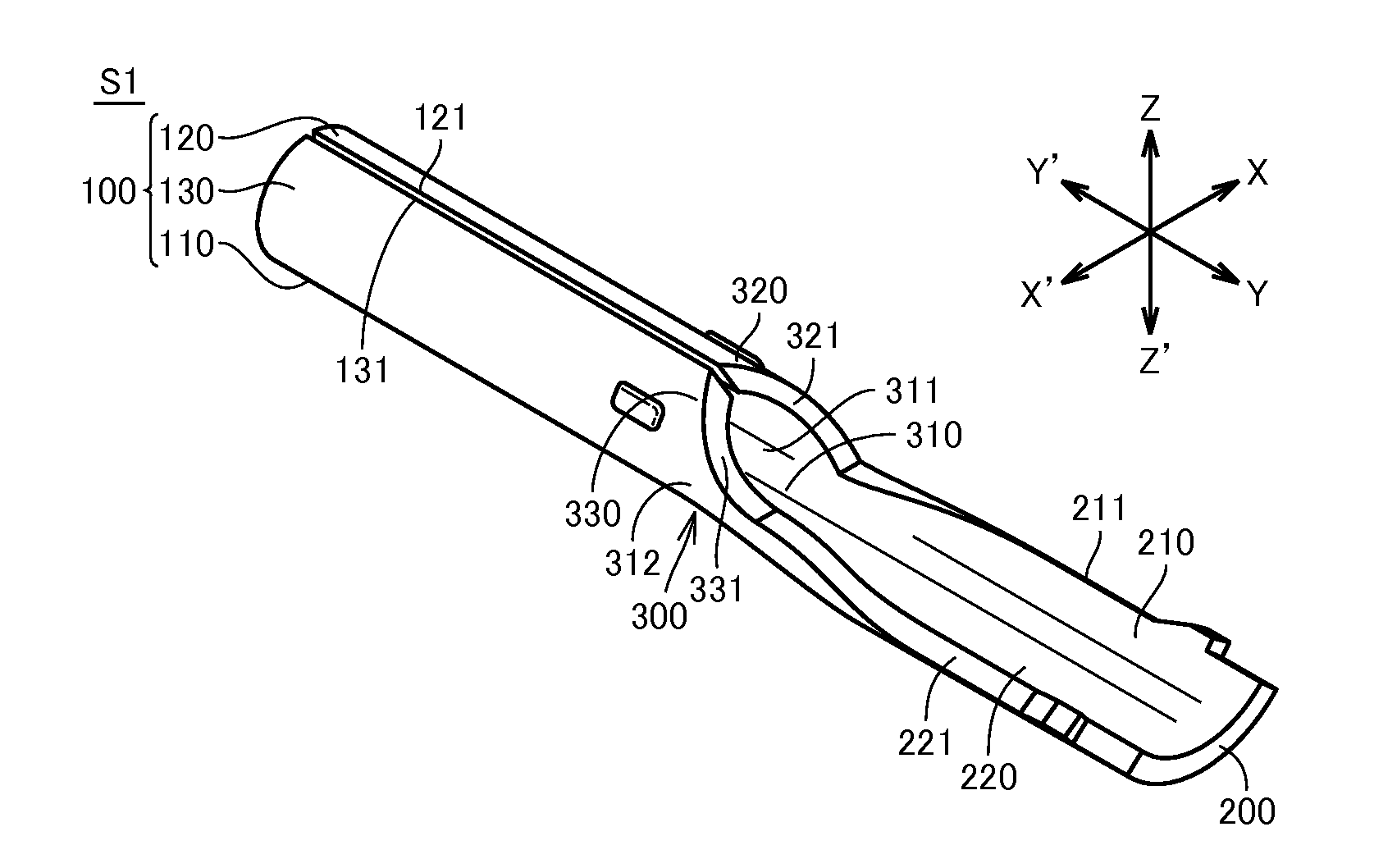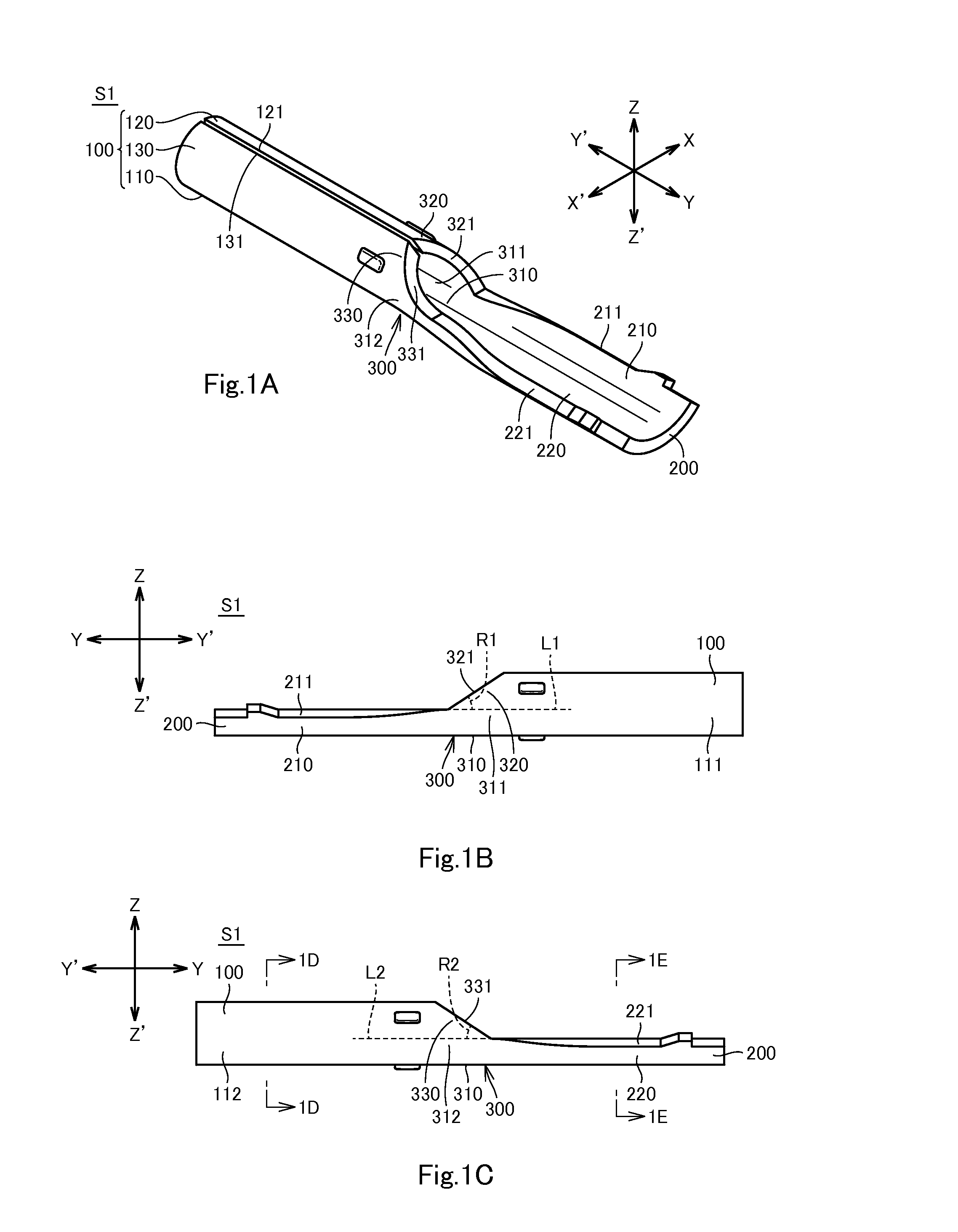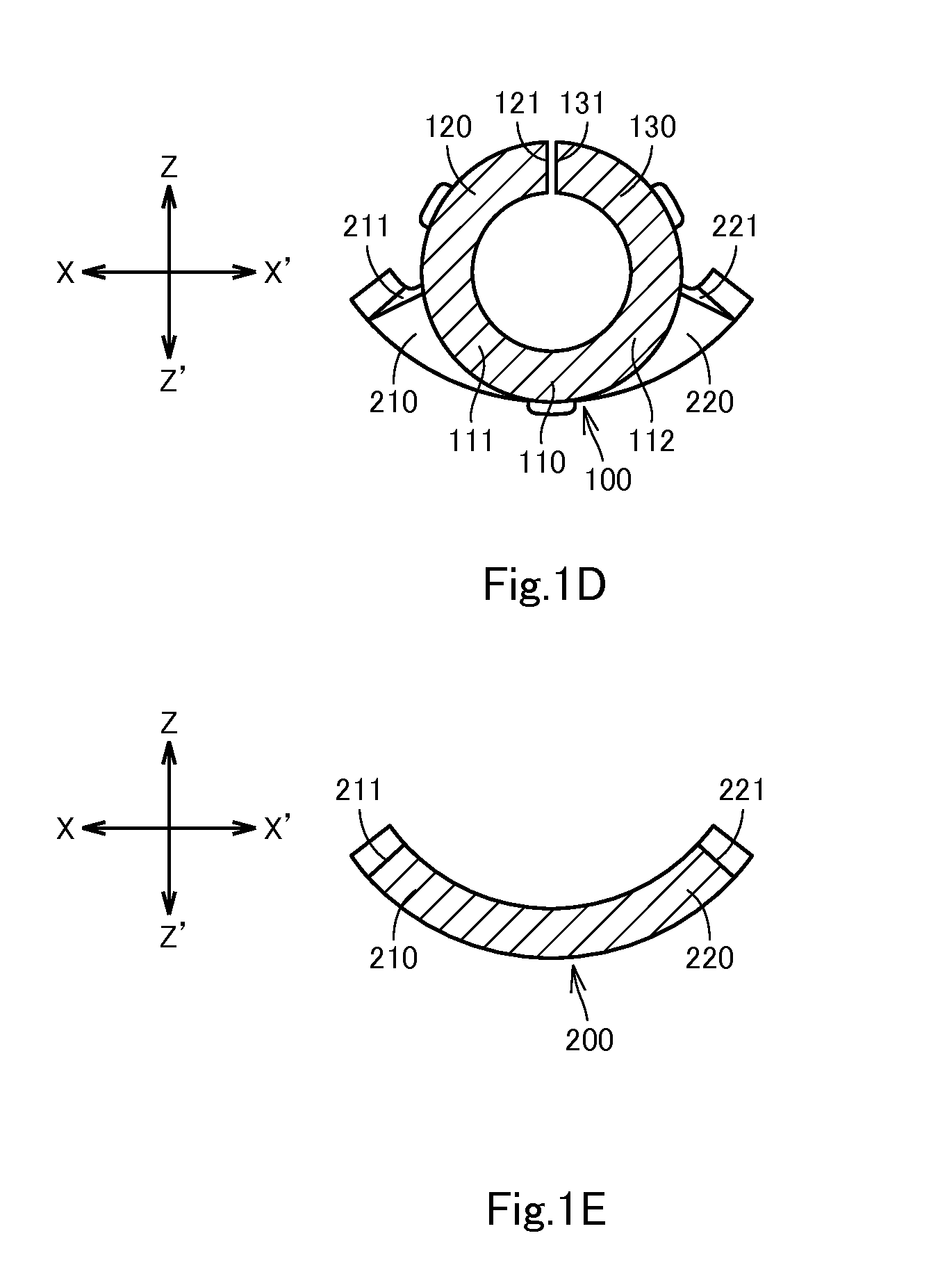Contact
a technology of contact and impedance, applied in the field of contact, can solve the problems of high-frequency signal reflection, sharp changes in impedance at these boundaries, etc., and achieve the effects of reducing reflection, reducing high-frequency signal reflection, and reducing the sharp change of impedance of the conta
- Summary
- Abstract
- Description
- Claims
- Application Information
AI Technical Summary
Benefits of technology
Problems solved by technology
Method used
Image
Examples
first embodiment
[0042]A contact S1 in accordance with the first embodiment of the invention will be described with reference to FIG. 1A to FIG. 1E. The contact S1 is formed of a metal plate having electrical conductivity. The contact S1 includes a first connectable part 100, a second connectable part 200, and a middle part 300. These components of the contact S1 will be described below in detail. It should be appreciated that the Y-Y′ direction indicated in FIG. 1A to FIG. 1C corresponds to the longitudinal direction of the contact S1 and to the “first direction” recited in the claims. Of the Y-Y′ direction, the Y direction corresponds to one side of the first direction, and the Y′ direction corresponds to the other side of the first direction. The X-X′ direction indicated in FIG. 1A, FIG. 1D and FIG. 1E corresponds to the lateral direction of the contact S1 and to the “second direction” recited in the claims. Of the X-X′ direction, the X direction corresponds to one side of the second direction, a...
second embodiment
[0061]A contact S2 in accordance with the second embodiment of the invention will be described with reference to FIG. 2A to FIG. 2C. The contact S2 is formed of a metal plate having electrical conductivity. The contact S2 has the same configuration as the contact S1, except that the contact S2 includes a first connectable part 400 of different configuration from that of the first connectable part 100 of the contact S1 of the first embodiment. The differences will be described below in detail and overlapping descriptions will be omitted. The Y-Y′ direction and the X-X′ direction are indicated in FIG. 2A to FIG. 2B, the Z-Z′ direction is indicated in FIG. 2A to FIG. 2B in a similar manner as in the first embodiment.
[0062]The first connectable part 400 includes a tube T and a pair of arms 440, 450. The tube T has substantially the same configuration as that of the first connectable part 100 of the first embodiment. As shown in FIGS. 2A to FIG. 2B, the tube T includes a base 410, a firs...
third embodiment
[0067]A contact S3 in accordance with the third embodiment of the invention will be described below with reference to FIG. 3. The contact S3 is formed of a metal plate having electrical conductivity. The contact S3 has a similar configuration as the contact S1 but includes a first connectable part 100′, a second connectable part 200′, and a middle part 300′ of different shapes from those of the first connectable part 100, the second connectable part 200, and the middle part 300, respectively, of the contact S1 in the first embodiment. The differences will be described below in detail and overlapping descriptions will be omitted. The Y-Y′ direction, the X-X′ direction, and the Z-Z′ direction are indicated in FIG. 3 in a similar manner as in the first embodiment.
[0068]The first connectable part 100′ is a rectangular tube extending in the Y-Y′ direction. The base 110′ of the first connectable part 100′ is a plate of generally angular U-shape in sectional view. The first wall 120′ of th...
PUM
 Login to View More
Login to View More Abstract
Description
Claims
Application Information
 Login to View More
Login to View More - R&D
- Intellectual Property
- Life Sciences
- Materials
- Tech Scout
- Unparalleled Data Quality
- Higher Quality Content
- 60% Fewer Hallucinations
Browse by: Latest US Patents, China's latest patents, Technical Efficacy Thesaurus, Application Domain, Technology Topic, Popular Technical Reports.
© 2025 PatSnap. All rights reserved.Legal|Privacy policy|Modern Slavery Act Transparency Statement|Sitemap|About US| Contact US: help@patsnap.com



